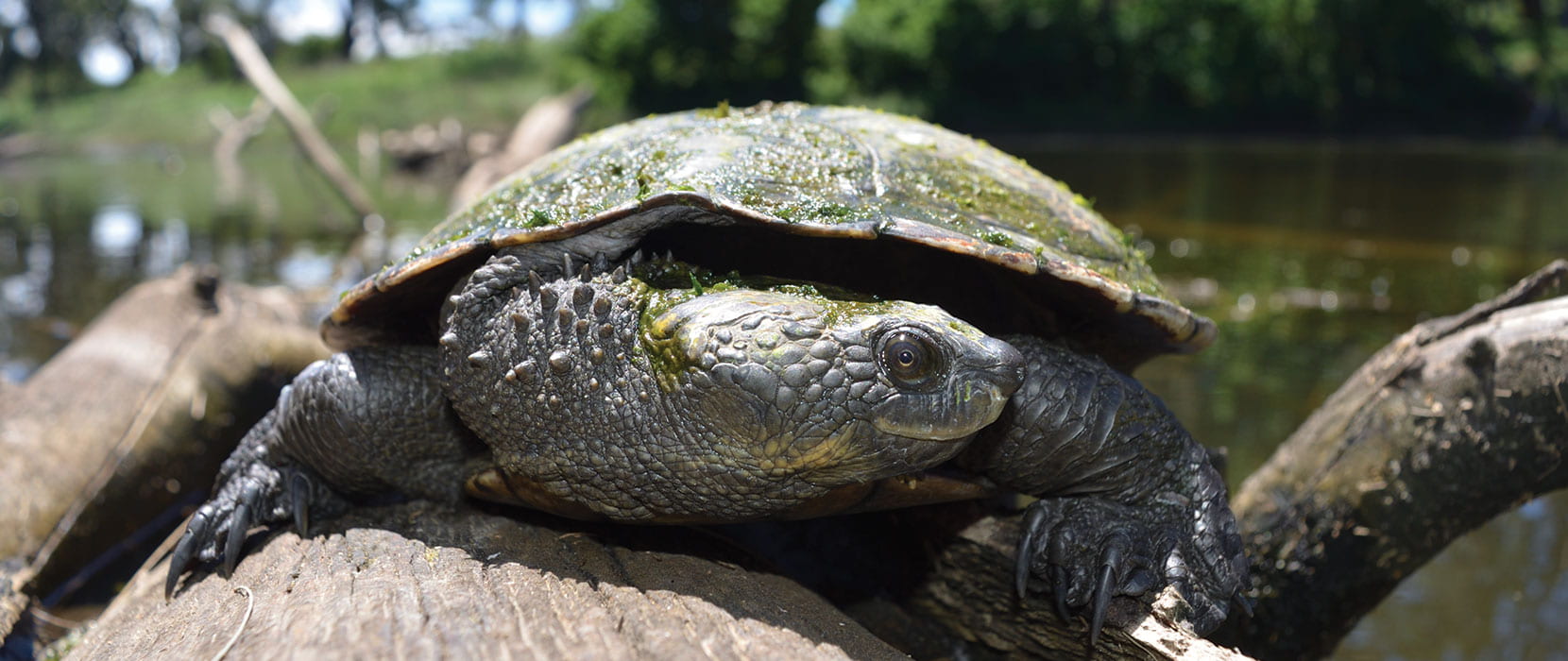For 250 million years, the turtle’s armour was sufficient to protect them from nearly any threat. Now, many need our help to survive.”
Geoff Hughes
Doctoral candidate
School of Environmental and Rural Science.
All over the world, turtles hold a special place in human culture. To some Aboriginal Australians, turtles represent love and compassion, and turtles are a common feature of rock paintings. To the First Nations of North America, the world was built on the back of a turtle. The Chinese saw the turtle as one of the four guardian animals, a black tortoise who ruled the north of China. Tahitians viewed the sea turtle as lord of the ocean. Although turtles are reptiles, they don’t seem to evoke the fear that other reptiles, such as snakes and crocodilians, do. Instead they are mostly revered and respected the world over.
Turtles are an ancient lineage, with a fossil record stretching back a quarter of a billion years. At first glance, perhaps this isn’t surprising; turtles seem to give off an aura of great age. Maybe it’s their slow, plodding gait and scaled, wrinkly skin, or their famous longevity. Some tortoise species can reach one hundred and eighty years of age such as Tu’i Malila, a radiated tortoise from Madagascar collected by Captain Cook. Although it’s unconfirmed, one Aldabra giant tortoise, Adwaita, may have been 250 when he died in 2006!
The New England region has a unique turtle species, found only here: the Bell’s turtle. Named for 19th-century English naturalist Thomas Bell, these turtles are only found in the west-flowing upland rivers of the Tablelands. They are distinctive for having a smooth ‘helmet’ on their heads, which turns a pale gold colour as the animal ages. Bell’s turtles are well-adapted for life in the uplands. The turtles stay underwater for much of the winter, where the temperatures are more stable and safer. While the water gets very cold, turtles are ectotherms (‘cold-blooded’) and can survive extreme changes in their body temperature; indeed, the cold slows their metabolisms down so they don’t need to eat or even breathe that much over the winter. A healthy Bell’s turtle can go up to 15 days without a breath in the winter! Sadly, turtles as a whole are not doing well, and the endangered Bell’s turtle is no exception. Around 60% of turtle species worldwide are threatened with extinction, with almost 20% being critically endangered. Despite their legendary toughness, turtles are not well suited to environmental changes caused by humans. The primary threat to Bell’s turtles is introduced foxes, which can eat 90-100% of all eggs laid each year. With several decades of little to no juvenile recruitment, the population will age and eventually die out. Local native turtles are also threatened by disease. In 2015, in coastal northern NSW, a virus nearly wiped out the Bellinger River turtle, a close cousin of the Bell’s turtle, in the span of a few months. Now that species’ future is in doubt, and may require human intervention to prevent its extinction.
Geoff Hughes, a PhD researcher in the School of Environmental and Rural Science, is studying ways to conserve the species. From devising new ways to protect nests from foxes, to determining the potential for competition with other turtle species, to exploring the consequences of an eye disease that afflicts the Bell’s turtles, Geoff is passionate about protecting this unique species’ future. As a scientist, Geoff says that while he needs to remain dispassionate about his research, to prevent biases from affecting the quality of his work, when he is holding a turtle he can’t help himself from looking into its eyes. He says, “I can almost feel an old soul studying me in return.” Geoff has studied Bell’s turtles for 14 months now, and turtles in general for 14 years.
[Photo: Bell’s Turtle, taken by Associate Professor Paul G. McDonald, UNE]


